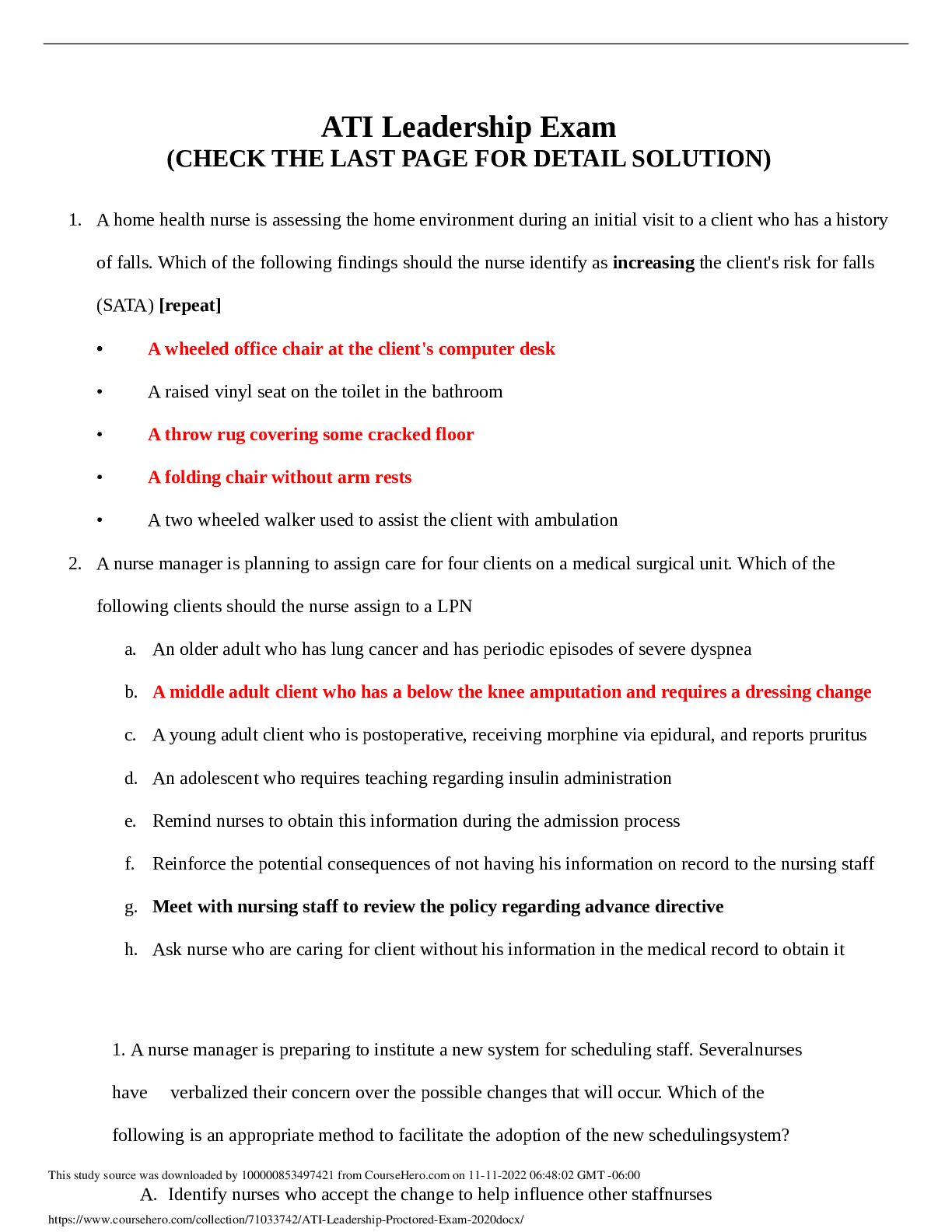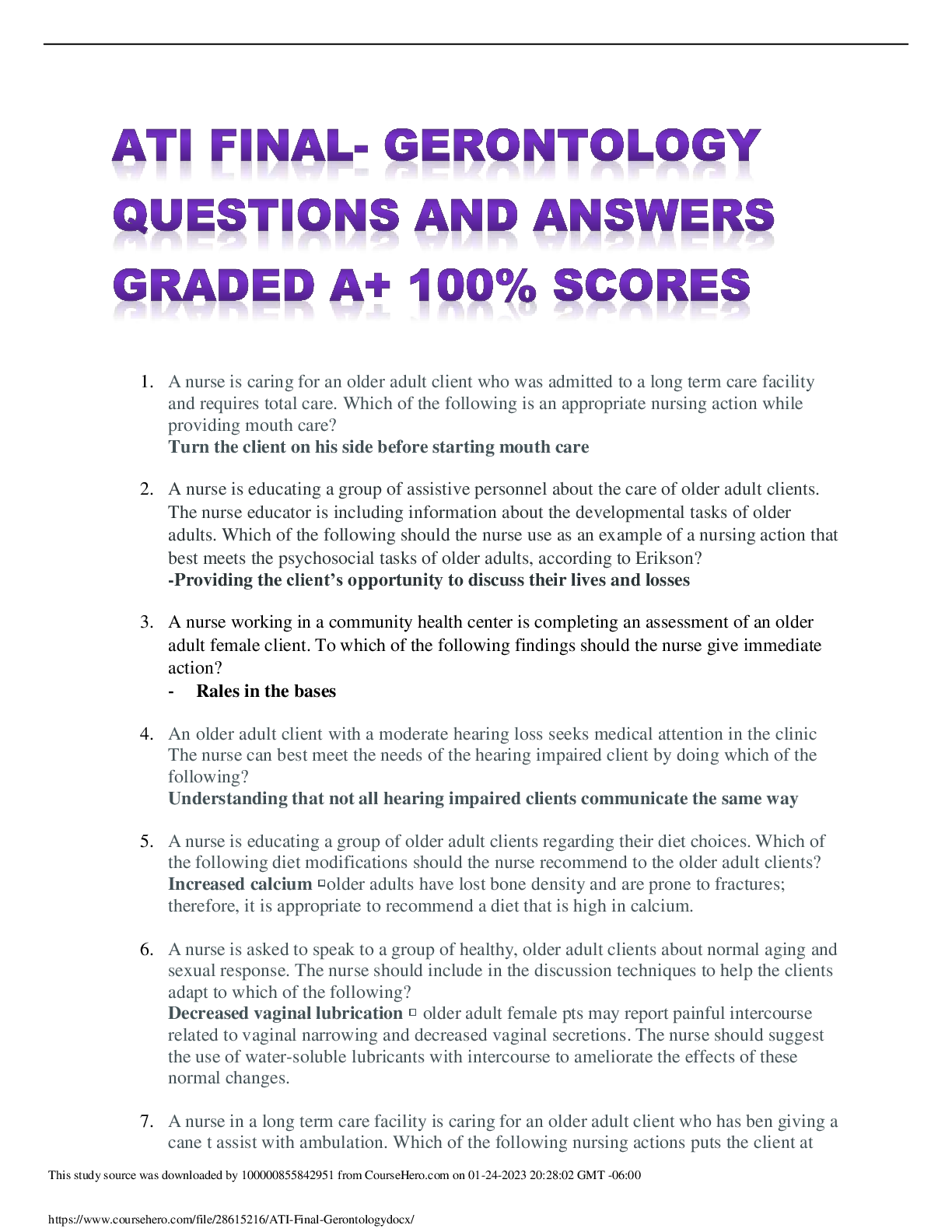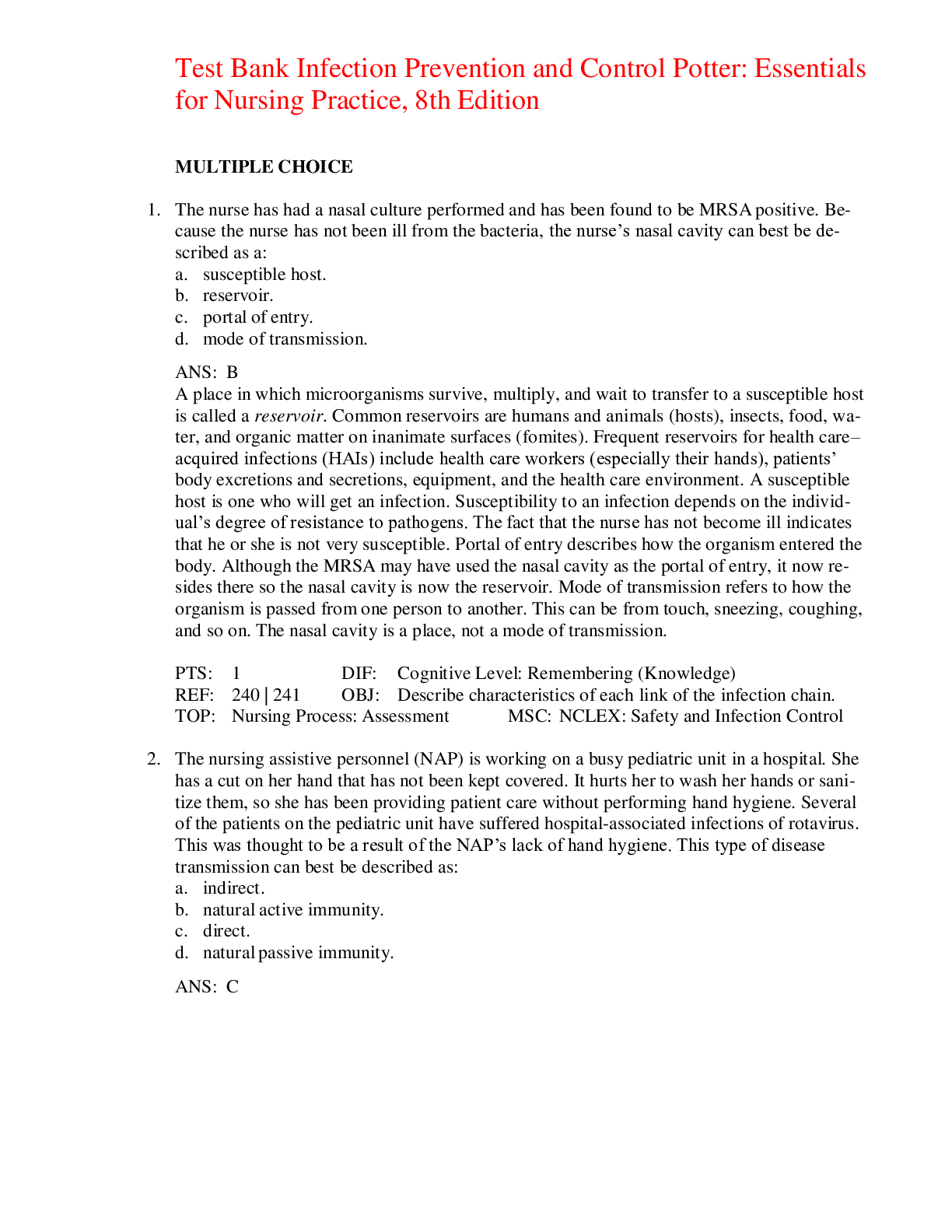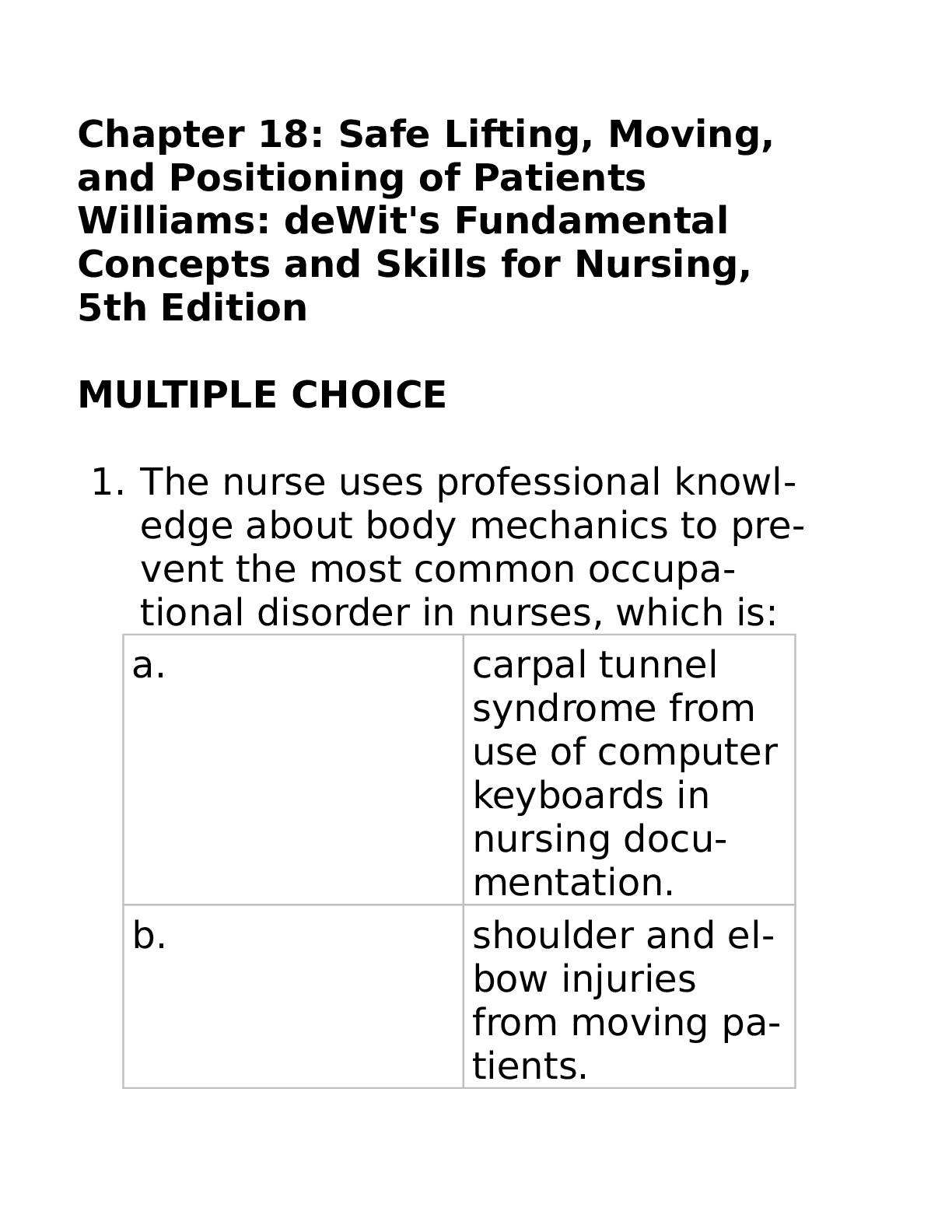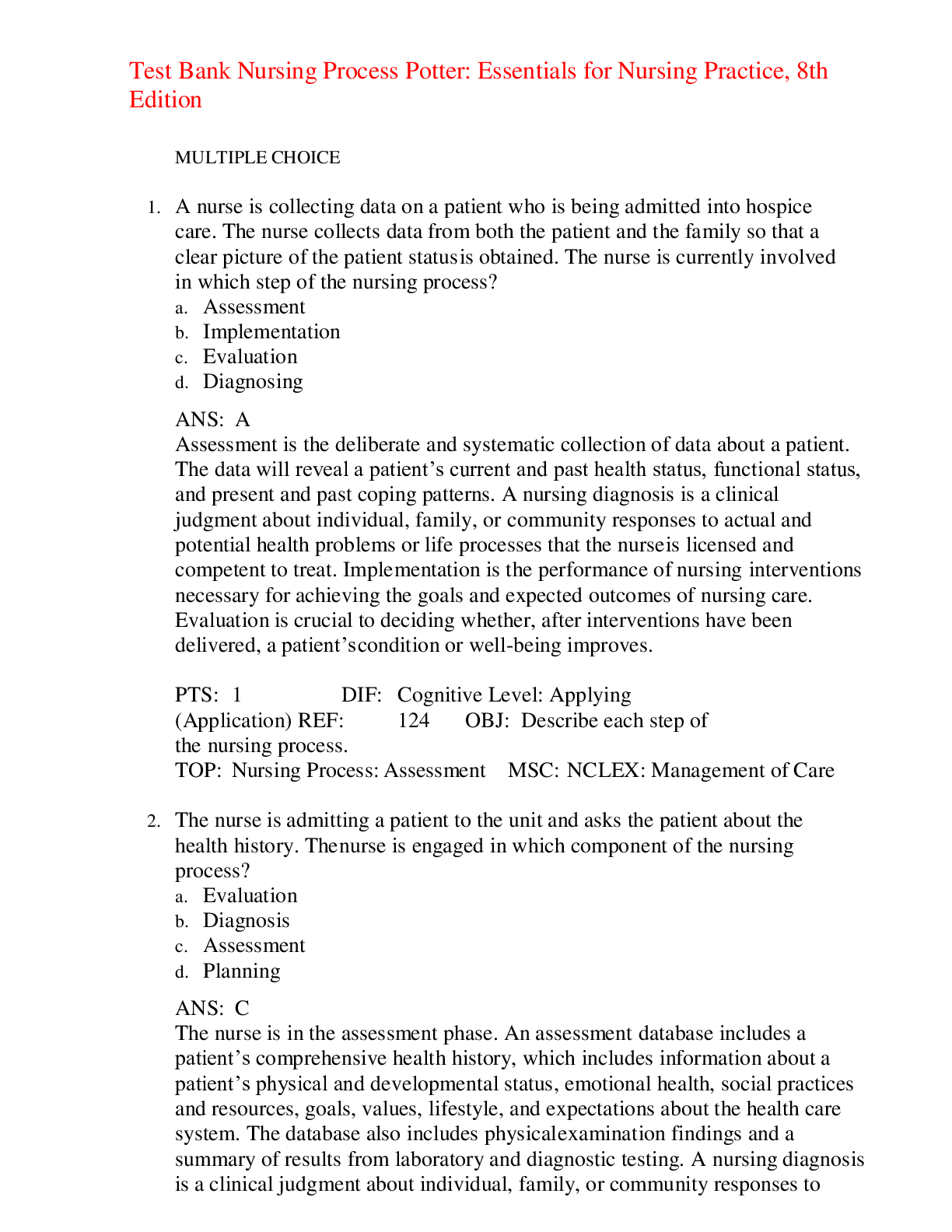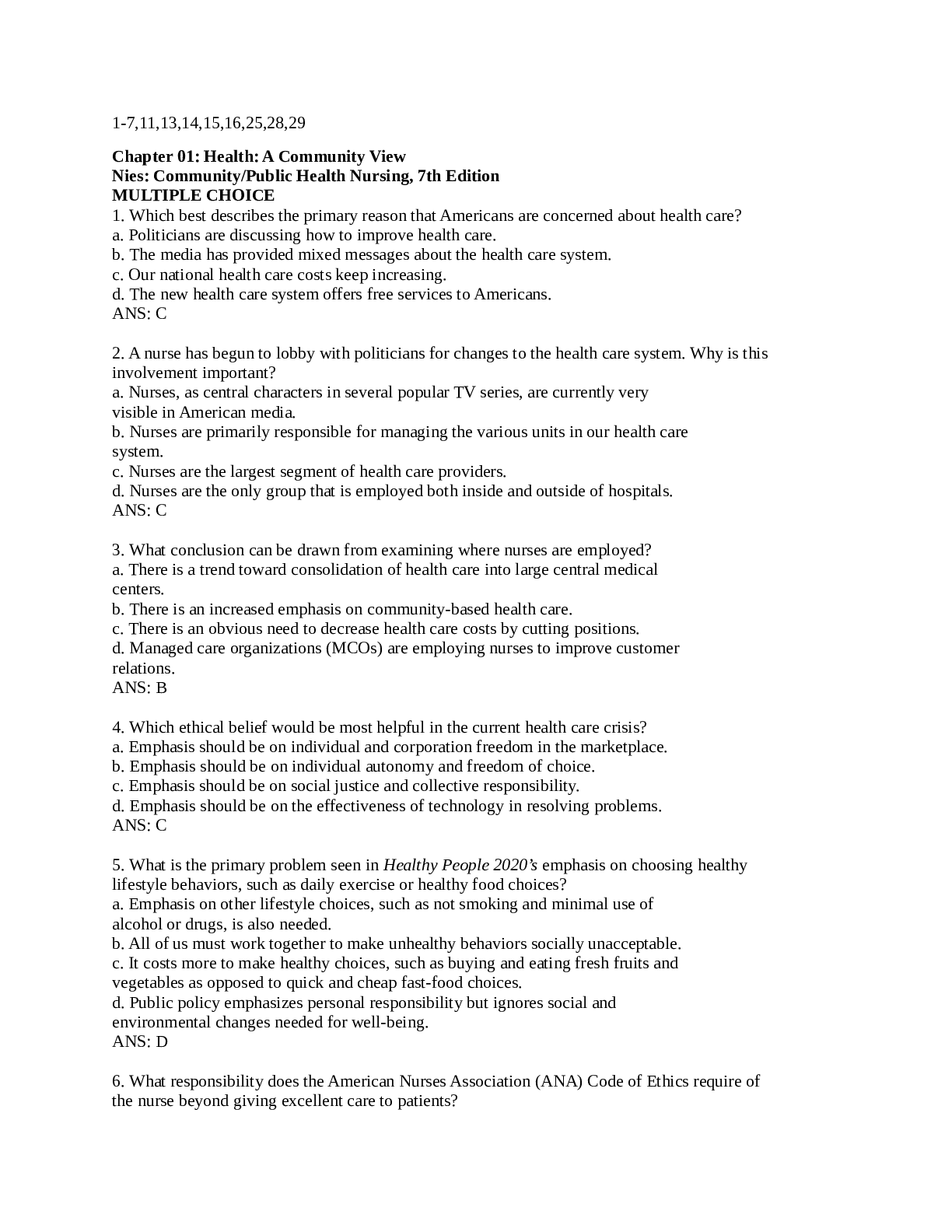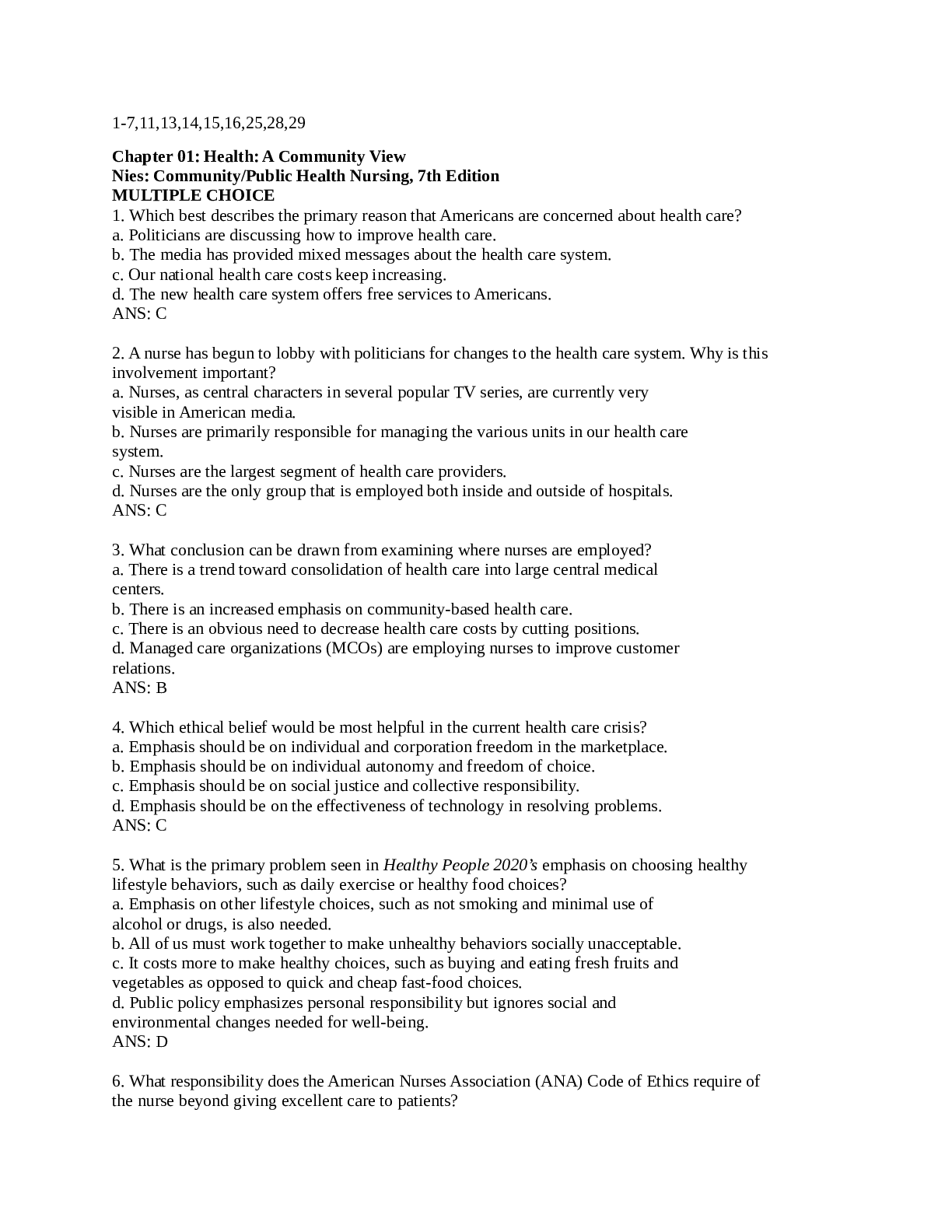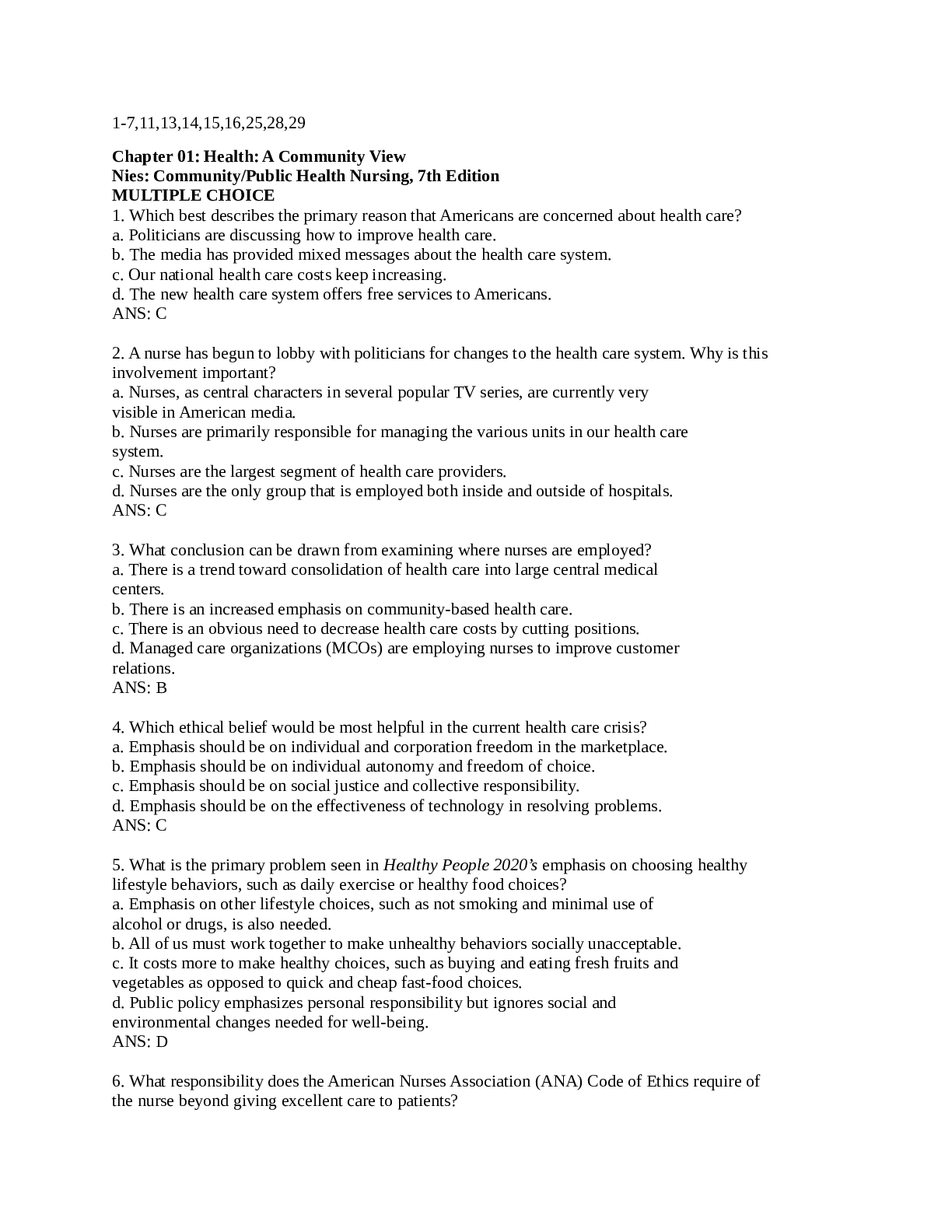*NURSING > EXAM PROCTORED > Chapter 21: Burns Sole: Introduction to Critical Care Nursing, 7th Edition (All)
Chapter 21: Burns Sole: Introduction to Critical Care Nursing, 7th Edition
Document Content and Description Below
Chapter 21: Burns Sole: Introduction to Critical Care Nursing, 7th Edition MULTIPLE CHOICE 1. The nurse is caring for a patient with acute respiratory failure and identifies “Risk for Ineffectiv... e Airway Clearance” as a nursing diagnosis. A nursing intervention relevant to this diagnosis is to a. elevate the head of the bed to 30 degrees. b. obtain an order for venous thromboembolism prophylaxis. c. provide adequate sedation. d. reposition the patient every 2 hours. ANS: D Repositioning the patient will facilitate mobilization of secretions. Elevating the head of bed is an intervention to prevent infection. Venous thromboembolism prophylaxis is ordered to prevent complications of immobility. Sedation is an intervention to manage anxiety, and administration of sedatives increases the risk for retained secretions. DIF: Cognitive Level: Analyze/Analysis REF: p. 396 Nursing Care Plan OBJ: Formulate a plan of care for the patient with acute respiratory failure. TOP: Nursing Process Step: Intervention MSC: NCLEX Client Needs Category: Physiological Integrity 2. The patient with acute respiratory distress syndrome (ARDS) would exhibit which of the following symptoms? a. Decreasing PaO2 levels despite increased FiO2 administration b. Elevated alveolar surfactant levels c. Increased lung compliance with increased FiO2 administration d. Respiratory acidosis associated with hyperventilation ANS: A Patients with ARDS often have hypoxemia refractory to treatment. Surfactant levels are often diminished in ARDS. Compliance decreases in ARDS. In early ARDS, hyperventilation may occur along with respiratory alkalosis. DIF: Cognitive Level: Understand/Comprehension REF: pp. 298-299 OBJ: Describe the pathophysiology of ARF. TOP: Nursing Process Step: Assessment MSC: NCLEX Client Needs Category: Physiological Integrity 3. The nurse assesses a patient who is admitted for an overdose of sedatives. The nurse expects to find which acid-base alteration? a. Hyperventilation and respiratory acidosis b. Hypoventilation and respiratory acidosis c. Hypoventilation and respiratory alkalosis d. Respiratory acidosis and normal oxygen levels ANS: B Hypoventilation is common after overdose and results in impaired elimination of carbon dioxide and respiratory acidosis. The overdose depresses the respiratory drive, which results in hypoventilation, not hyperventilation. Hypoxemia is expected secondary to depressed respirations. DIF: Cognitive Level: Analyze/Analysis REF: p. 390 | p. 392 OBJ: Describe the pathophysiology of ARF. TOP: Nursing Process Step: Assessment MSC: NCLEX Client Needs Category: Physiological Integrity 4. Intrapulmonary shunting refers to a. alveoli that are not perfused. b. blood that is shunted from the left side of the heart to the right and causes heart failure. c. blood that is shunted from the right side of the heart to the left without oxygenation. d. shunting of blood supply to only one lung. ANS: C Shunting refers to blood that is not oxygenated in the lungs. DIF: Cognitive Level: Understand/Comprehension REF: pp. 390-391 OBJ: Describe the pathophysiology of ARF. TOP: Nursing Process Step: Assessment MSC: NCLEX Client Needs Category: Physiological Integrity 5. When fluid is present in the alveoli, a. alveoli collapse, and atelectasis occurs. b. diffusion of oxygen and carbon dioxide is impaired. c. hypoventilation occurs. d. the patient is in heart failure. ANS: B Fluid prevents the diffusion of gases. It does not cause atelectasis or hypoventilation. Fluid can be present in the alveoli secondary to heart failure; however, there are other causes as well, such as acute respiratory distress syndrome. DIF: Cognitive Level: Understand/Comprehension REF: p. 391 OBJ: Describe the pathophysiology of ARF. TOP: Nursing Process Step: Assessment MSC: NCLEX Client Needs Category: Physiological Integrity 6. In assessing a patient, the nurse understands that an early sign of hypoxemia is a. clubbing of nail beds. b. cyanosis. c. hypotension. d. restlessness. ANS: D [Show More]
Last updated: 2 years ago
Preview 1 out of 15 pages

Buy this document to get the full access instantly
Instant Download Access after purchase
Buy NowInstant download
We Accept:

Reviews( 0 )
$9.00
Can't find what you want? Try our AI powered Search
Document information
Connected school, study & course
About the document
Uploaded On
Jun 03, 2021
Number of pages
15
Written in
Additional information
This document has been written for:
Uploaded
Jun 03, 2021
Downloads
0
Views
111


.png)


